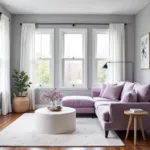Is pink a neon color? The answer isn’t as straightforward as you might think. While we often associate vibrant, glowing pinks with the term “neon,” the reality involves a bit more nuance regarding pigments, light, and how we perceive color. Let’s delve into the fascinating world of color and explore this question in detail.
There’s a common misconception that pink itself can be neon. However, “neon” refers to a specific group of gases that emit light when electrically charged. These gases include neon (which emits a reddish-orange light), argon (blue), krypton (pale violet), and others. True neon colors are created by the light emitted from these gases, not by pigments reflecting light. Thinking about what colors go with neon pink can help understand its vibrancy.
To create a “neon pink” effect using pigments, we often use fluorescent dyes. These dyes absorb light at one wavelength and re-emit it at another, creating a brighter, more intense appearance than standard pigments. This is why a hot pink often gets mistaken for a neon pink, especially under black light. You can learn more about creating this vivid hue by checking out what colors make neon pink.
Understanding Neon Colors
So, what defines a neon color? It’s the luminous glow, the intense vibrancy that seems to radiate light. This effect comes from the light source itself, as with neon gas signs, or from fluorescent pigments. Think of the classic neon signs illuminating cityscapes at night—those electric blues, fiery oranges, and yes, those eye-catching pinks. These colors have a unique quality that sets them apart from standard colors on the color wheel.
What Makes Pink Appear Neon?
The “neon” look in pink is usually achieved through fluorescent pigments. These pigments absorb ultraviolet (UV) light and re-emit it as visible light, creating the characteristic glow. The intensity of this glow depends on the specific pigment used and the amount of UV light present. That’s why colors that appear “neon” under black light (which emits UV light) often appear less vibrant in regular lighting conditions.
Exploring the Pink Spectrum
Pink itself is not a spectral color, meaning it doesn’t appear on the visible light spectrum. It’s created by combining red and violet light, or by using pigments that absorb certain wavelengths and reflect the remaining red and violet light. The vast range of pinks, from pale blush to vibrant magenta, is due to varying proportions of red and violet and the addition of white. You might be interested in learning more about what colors go with neon pink to use it effectively in your designs. For a completely different color exploration, you could also look into what color is 666.
Can We Call Any Pink “Neon Pink”?
While any pink can be made to appear more vibrant with fluorescent pigments, the term “neon pink” is generally reserved for those pinks that exhibit a particularly intense glow, reminiscent of neon lights. These pinks are often saturated and highly visible, capturing attention and making a bold statement. If you are curious about the temperature of pink, you can find out whether is pink a cool color. Another interesting combination to explore is what color shirts match with khaki pants, which can offer a stylish contrast to the vibrancy of neon pink.
Using Neon Pink in Design
Neon pink is a powerful design element, capable of adding energy and flair to various applications. From fashion and interior design to graphic design and branding, neon pink can create a striking visual impact. However, its vibrancy should be used strategically. Too much neon pink can be overwhelming, while just the right touch can be captivating.
“Neon pink is a fantastic tool for grabbing attention,” says renowned color consultant, Amelia Hues. “It’s bold, playful, and adds a touch of modern edge to any project. However, it’s crucial to use it judiciously to avoid a jarring effect.”
Conclusion
Is pink a neon color? Not inherently. True neon colors are created by light emitted from neon gases. However, the vibrant “neon pink” we often see is achieved with fluorescent pigments. Understanding the difference helps us appreciate the science and artistry behind color creation and how we perceive the fascinating interplay of light and pigments. So, the next time you see a dazzling “neon pink,” remember that it’s the clever manipulation of light and pigments, not a fundamental property of pink itself, that creates that eye-catching glow. Remember that if you need any color advice or painting services, Color Box Hanoi is here to help. Contact us at 0373298888, email us at [email protected] or visit our showroom at 86 Cầu Giấy, Hanoi. We have a 24/7 customer service team available to assist you.
FAQ
- What makes a color “neon”?
- How are fluorescent pigments different from regular pigments?
- How is pink created?
- What are some popular uses for neon pink?
- What are some colors that complement neon pink?
- Is neon pink suitable for all design projects?
- Where can I find high-quality fluorescent pink pigments?
Do you have other questions about colors and painting? Please contact us, we are always happy to help. Here are some resources that might be useful for you: what colors make neon pink, what colors go with neon pink.
Need further information? Explore our website for more articles related to color theory, paint application techniques, and design inspiration.
We encourage you to connect with us for personalized color consultations. Color Box Hanoi is dedicated to helping you create vibrant, inspiring spaces that reflect your unique style. Contact us today: Phone: 0373298888, Email: [email protected], Address: 86 Cầu Giấy, Hanoi. We have a 24/7 customer service team.
